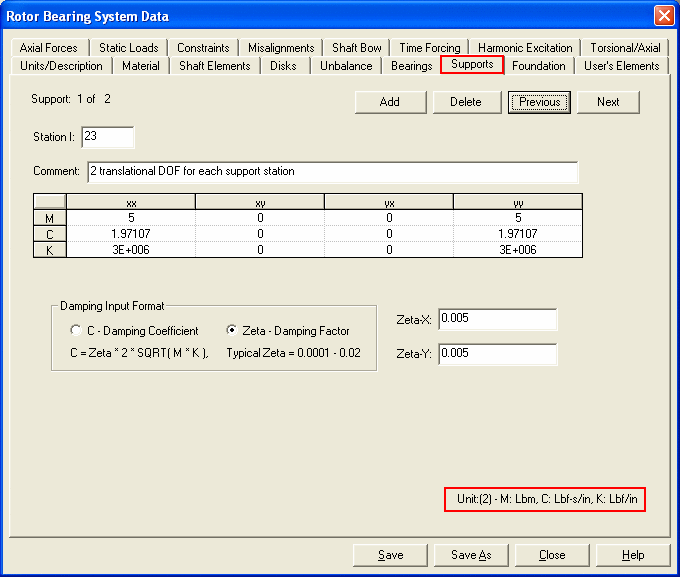
Two translational displacements are used to describe the motion of a flexible support, i.e. two degrees-of-freedom at each support station. A support is connected to a rigid ground through the support stiffness and damping. Note that the support stiffness and damping can be zero if the support is not connected to the rigid ground; however, the support mass cannot be zero since it defines the degrees-of-freedom. The flexible supports are considered to be non-rotating components. The rotational displacements of a flexible support are constrained automatically in the modeling process.
Station I: Support station number. Note that a support station has to connect to the rotor station or another support by a bearing.
Comment: Description of this support.
Coefficients: Mass, Damping and Stiffness Coefficients
MxxMxyMyxMyy
Cxx CxyCyxCyy
Kxx KxyKyxKyy
Damping Input:
The damping effect can be entered in two ways, that is, either the direct damping coefficients or the modal damping factor. For the structure damping, sometimes it is hard to specify the damping coefficients. Damping factor can be entered as an alternative input. Typical damping factor ranges from 0.0001 to 0.02.


See also Bearings.
Copyright © 2014-2017